A Guide to Bus Travel Around Peru
There are a few ways to travel around Peru: by plane, by private vehicle, by train or by bus.
In this blog post we’ll tell you everything you need to know about bus travel in Peru. This post is aimed at backpackers staying in the country for a longer period of time, for those who don’t want to rent a car and for those looking for affordable and more sustainable travel options to flights.
For reference, we spent just under three months in Peru and used primarily buses to travel between places. We only flew once from Cusco to Lima during our stay. We travelled on daytime and overnight buses, and waited at many different bus stations. Whilst this doesn’t make us experts, our experience allows us to provide you with insider advice and tips.
Before Peru, we travelled through Mexico by bus and over the years we’ve also travelled across the USA and backpacked around Europe using plenty of buses as a means of transport. Therefore, we have lots of experience when it comes to taking long-distance bus rides. So hopefully we’ll be able to provide some good comparisons to other countries as well.
Disclosure: This post may contain affiliate links, which means we may receive a small commission if you click a link and purchase something. Clicking these links won’t cost you anything, but it will help us to keep this site up and running! Learn more about our affiliate policy.
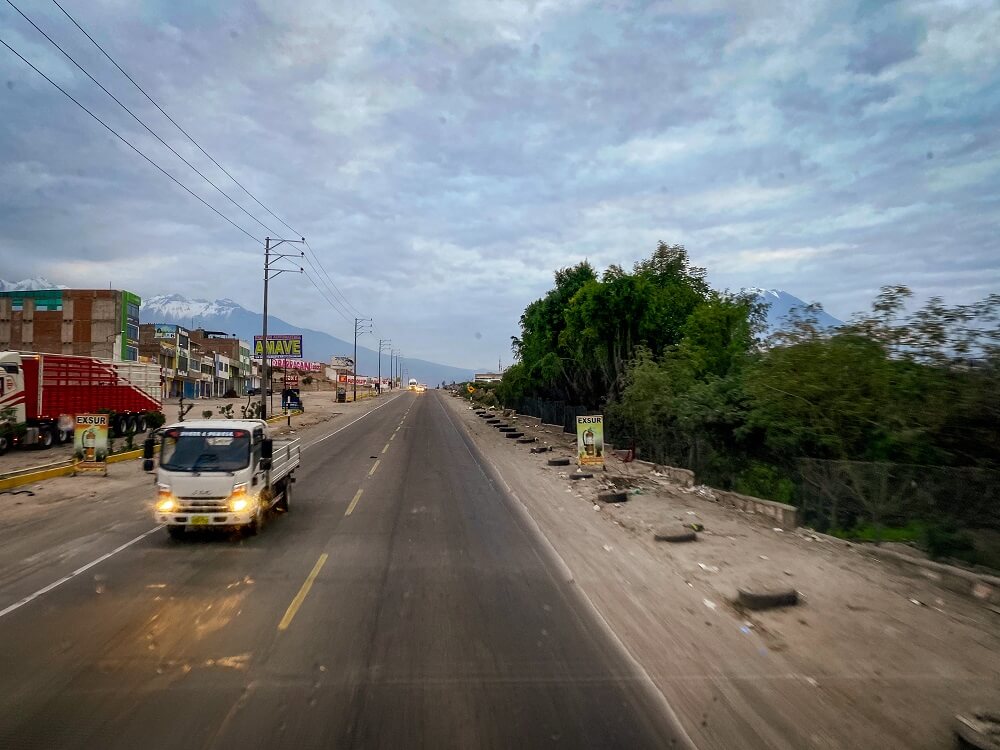
Why Travel by Bus in Peru
Without doubt, travelling by bus will be your go-to method of transport in Peru. Why, you might ask? Well, first of all, buses are the cheapest and best way to get around the country.
Flying to certain places in Peru is definitely much faster than taking the bus. However, it is way more expensive and definitely way less environmentally friendly. In addition, there are many popular places, such as Huaraz, that don’t even have an airport, so you have to take another method of transport to get there.
Whilst driving gives you more freedom and also allows you to access some off-the-beaten path places, driving in Peru looked hectic enough for us to stick to the buses. The distances are long and the narrow mountain roads can be dangerous. Renting a car might be a great option for short trips, but we personally wouldn’t choose to travel across the country in a hire car.
There are a few trains across Peru, which could be a great novelty experience. So we recommend checking out your options. Train travel will still be more expensive than the bus though and again you can only access a handful of places.
Our Top Resources for Travelling Around Peru
- 🚌 Find bus routes and companies using Busbud
- 📱Get an eSIM with Airalo to be able to use data
- 🛡️Don’t forget to buy travel insurance via SafetyWing
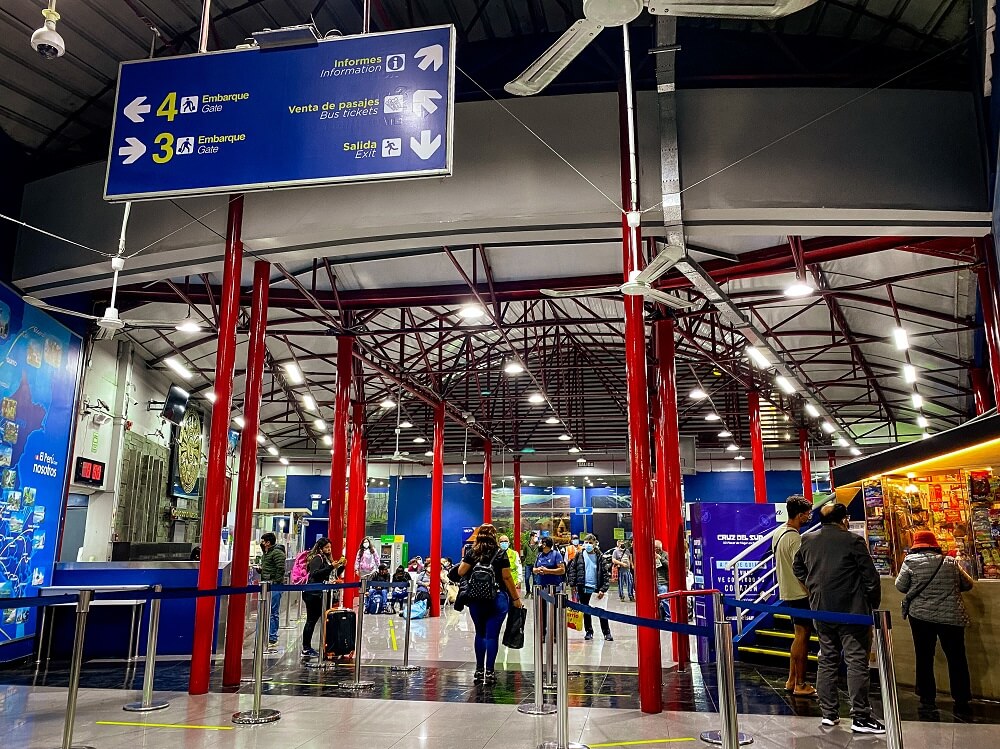
Is Bus Travel in Peru Safe?
I guess there’s an important factor you’ll want to consider before committing to a long-distance bus ride: is it safe? I bet you would ideally want a straight yes or no answer to this question. In reality, I can only tell you what we read online and how we actually felt travelling by bus.
Unfortunately bus accidents are not uncommon in Peru. These can happen due to bus driver tiredness, narrow and windy roads across the Andes or due to thick fog along the coast. Hijacking could also happen, especially in the highlands where GPS signals can be easily lost.
Furthermore, petty crime can happen anywhere in the world, and Peru is no exception. During your search, you’ll likely come across stories about robberies at bus stations or even by bus attendants on some services.
However, we didn’t feel unsafe at all travelling by bus in Peru. We picked Peru Hop due to their high safety standards. Although the company decided to use public buses on some routes because of the effect of the pandemic on tourism, we felt safe on public buses too and used them on other routes after our Peru Hop tour.
Safety Tips for Bus Travel in Peru
Whilst you’re more than likely to have an uneventful journey, below are a few of our general tips for extra safety:
- Do your research and pick the most reputable bus company to travel with even if it means paying extra for your ticket.
- If you’re travelling solo, or having to travel to the bus station for an overnight bus, I suggest calling an Uber, Cabify or official taxi.
- At bus terminals you’ll hear many people shouting certain destinations. Just ignore those and make sure to buy your ticket from the ticket office.
- Once at the station, make sure to have all your belongings with you at all times. It’s obviously easier to grab food or go to the toilet if you’re travelling in pairs or small groups.
- For extra security, consider putting a lock onto both your big bag and smaller backpacks.
- I know it’s obvious, but don’t put any valuables into the bag that’s going under the bus. They can get thrown about and have a greater chance to be stolen.
- Again, obvious, but don’t put your valuables in the compartment above your head either. Keep them close.
- Always wear your seatbelt. You just never know.
- Lastly, having good travel insurance is key in case your bags get lost or stolen.
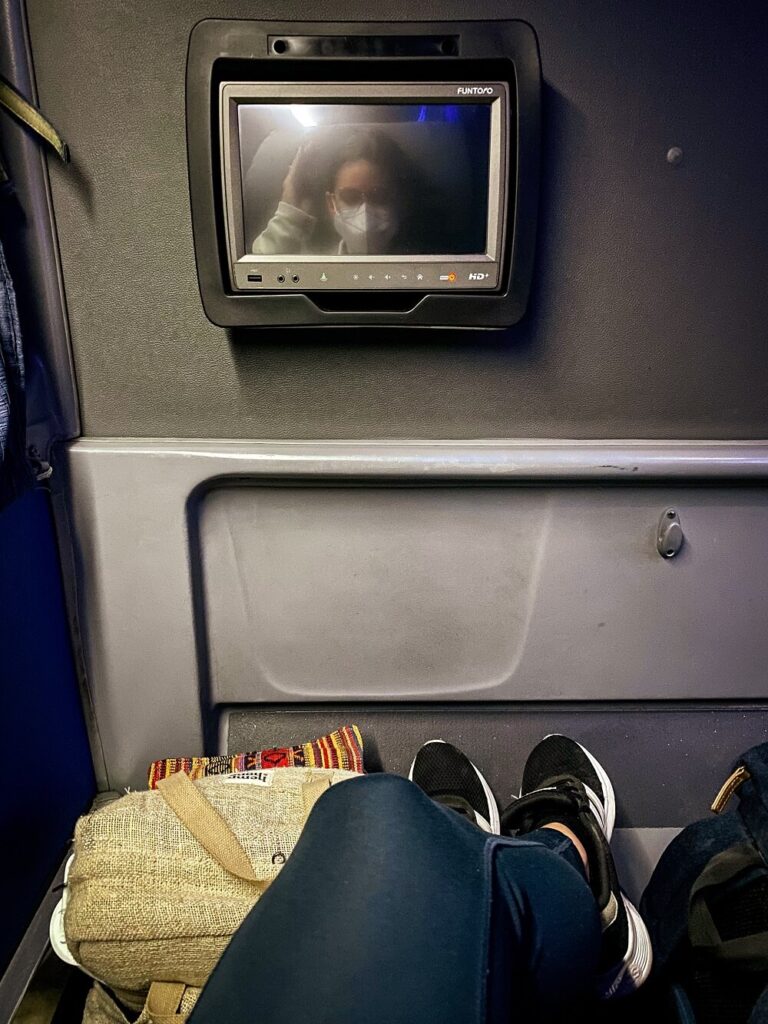

Are Buses Comfortable in Peru?
Well, after using many well-known bus companies across the USA and Europe such as Greyhound, Flixbus and National Express, I can safely say that Peru’s buses were far more luxurious. We had massive, comfortable reclining seats that we’d only ever seen as we walked past the business class section on planes. We had fantastic leg room with leg rests that made us feel like we were in bed.
Almost all services had an onboard host, toilet and A/C. In addition, many services provided on board entertainment that helped to kill the time.
What Else to Consider Before You Decide to Travel by Bus in Peru
Before you travel, ask yourself the following questions to make sure that bus travel is the best mode of transportation for YOU:
Do I get motion sick easily? – I wouldn’t recommend taking too many buses across the country if you suffer from serious motion sickness. The journeys are generally long and the roads can be bumpy and very windy especially in the Andes. In that case, flying is probably a better option for you.
Altitude Sickness – I think travelling by bus would actually help you acclimatise a bit better than flying from Lima, for example, and landing at 3,400m above sea level in Cusco. However, you could still be hit by altitude sickness on your bus journey. Therefore, make sure that you’re prepared by drinking a lot of water, and having altitude sickness pills in hand.
How much time do I have? – If you’re only in the country for a short time or need to be somewhere on a certain day or time then make sure to take an earlier bus, travel the day before or pick another method altogether. Whilst some buses are on time with very minimal delays, you really never know what’s going to happen on the roads. You don’t want to risk missing an important flight for example.
Do I know some Spanish? – Whilst you’ll be able to communicate in English at airports, this isn’t always the case at local bus stations. Although, if you choose to travel with Peru Hop (discussed below) then you won’t have any issues using only English. However, if you’re using local bus companies then we recommend learning the basics prior to your trip such as how to ask for bus tickets, dates, times and numbers. There is also the life-saving Google Translate App which will be your best friend during your travels.
Where to Find Information About Bus Routes and Companies
Although I’ll detail and link the main bus companies below, it’s always good practice to do your own research too.
Our main online sources that helped us to find bus routes and companies operating to and from our next destination were Busbud.com, and Rome2Rio. These websites are also great if you’d like to travel locally and are looking for smaller bus operators and detailed bus routes.
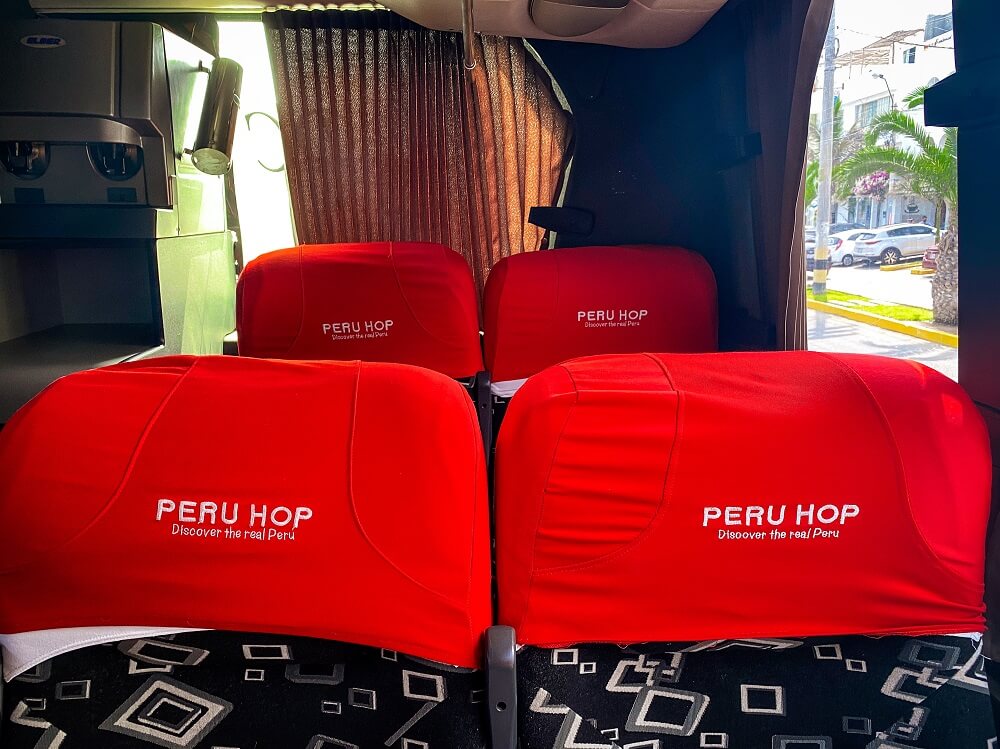
Bus Companies to Use in Peru
It’s probably good to know that Peru doesn’t have a national bus company. Instead, the country has many private companies which cover most of the places you’re likely to travel to during your stay.
Below is a list of bus companies that we used or believe are companies you can rely on. These bus companies will get you to your destination safely and comfortably. However, please still bear in mind that unfortunate events could happen anywhere in the world. So, make sure to stay vigilant especially at bus stations.
Peru Hop
I guess it wouldn’t be a bus travel guide for Peru without mentioning Peru Hop. If you haven’t heard about Peru Hop before, then let me tell you why this company is going to be the one you’ll use the most in Peru.
It is the first and only hop-on, hop-off bus system in the country, covering destinations on the Lima to Cusco route. They only started operating in 2013, so it’s definitely the newest bus service in the country. The buses aren’t only comfortable, but they put safety above everything else.
The company caters for tourists, therefore their buses are travelling to the most sought after locations such as Paracas, Huacachina, Nazca, Arequipa, Puno and Cusco.
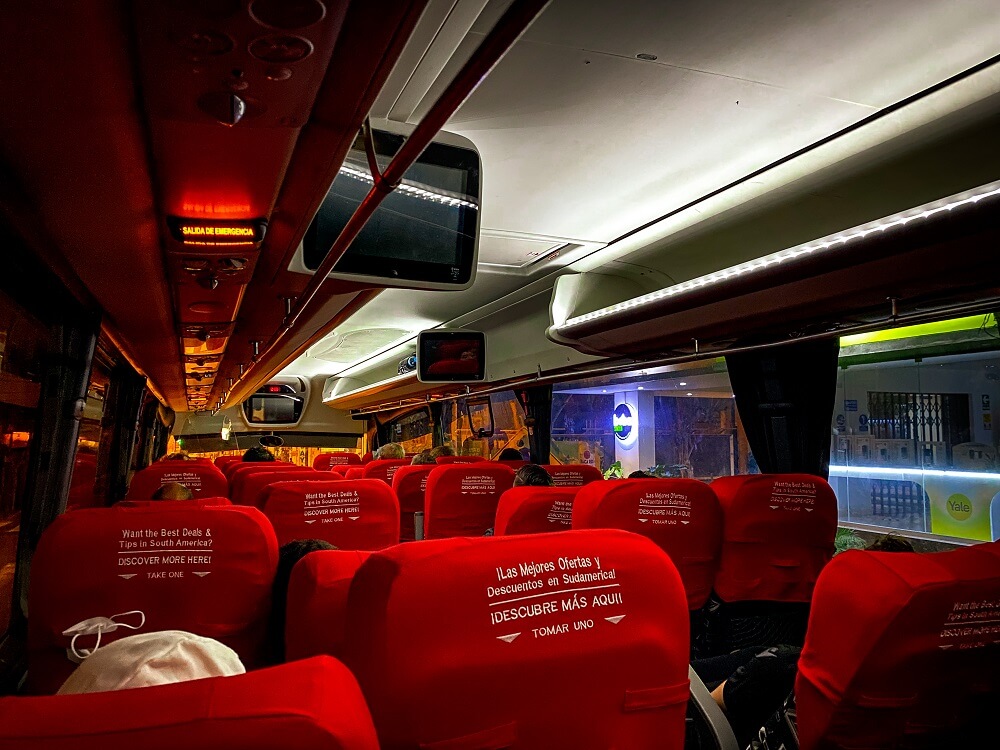
Pros of using Peru Hop
- They have very high safety standards which makes them the safest bus company to travel with in Peru.
- You only need to purchase your bus pass and fill out a form with the dates you want to travel to your next stop. The rest will be organised by the company.
- There are plenty of different bus passes you can choose from depending on your time and interest.
- Depending on where you’re staying, there’s a pick-up and drop-off option available from your accommodation. So, no need to travel to / from and wait at bus terminals.
- Peru Hop offers discounts on certain accommodations and restaurants.
- The bus pass also includes entry fees to certain places such as the Paracas Nature Reserve and other activity options along the way.
- It’s a great company to travel with if you want to connect with other travellers or are travelling solo.
- They have a bilingual tour guide on every bus, so it’s great if you don’t speak much Spanish. The guides are also very fun and will keep you entertained.
- You can even travel to/from Bolivia with Peru Hop, so it’s great if you’re backpacking across South America.
Cons of using Peru Hop
- Their services don’t cover the north of Peru.
- Travelling with Peru Hop could feel a bit touristy for some. Obviously, this company caters to tourists so you won’t see any locals on these buses. If you want to have that typical backpacker experience of waiting at bus stops trying to figure out where you are and where to go next, then go with public buses instead.
- We actually never did the math, but buying public bus tickets might work out slightly cheaper than Peru Hop’s bus passes.
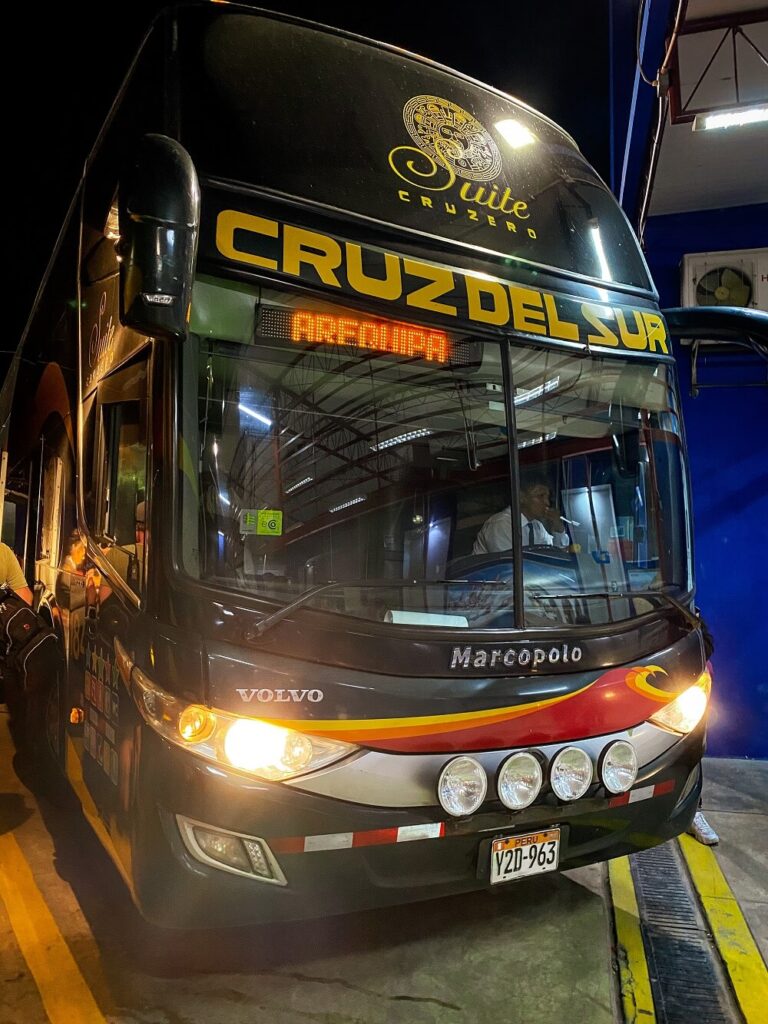
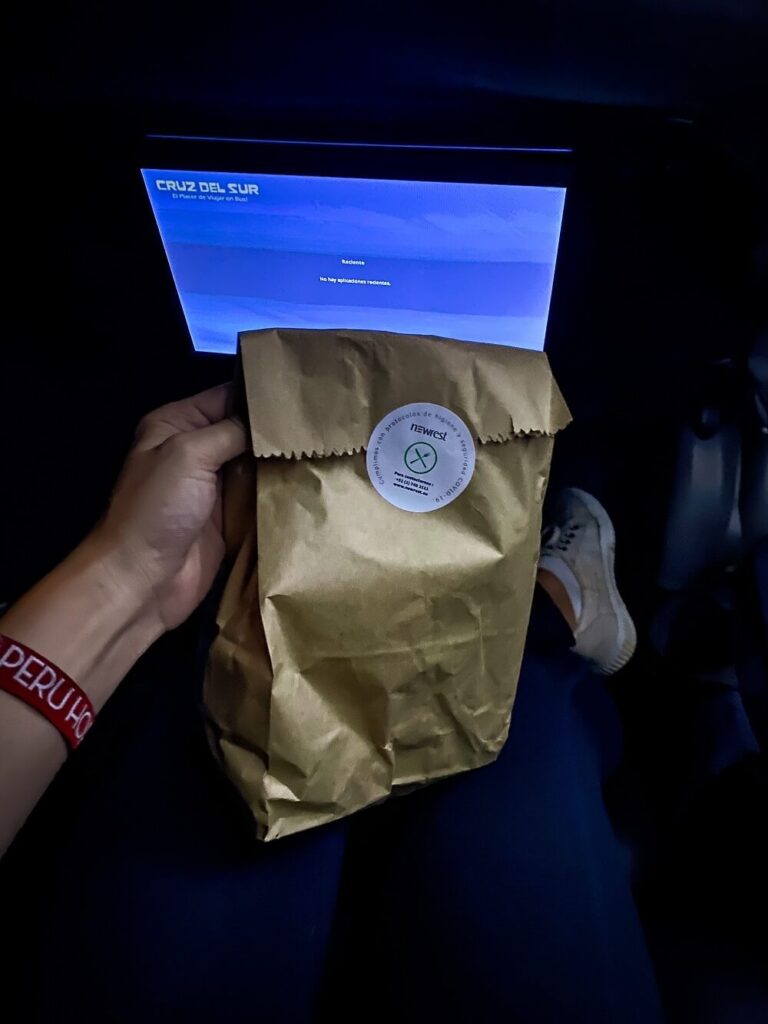
Cruz del Sur
Although we used Peru Hop’s bus pass to travel across the south of Peru, due to COVID-19’s impact on tourism, the company was actually using public bus services instead of their own buses on certain routes. One of their (and later our) favoured bus companies was Cruz del Sur, which is Peru’s biggest bus company.
The over 50 years old company is also the most mentioned bus operator by locals traveling from A to B. They cover the majority of the country and are definitely a great choice if you’re venturing to the north of Peru, to places like Huaraz, Trujillo and Mancora. Up until Peru Hop came along Cruz del Sur was used by the majority of tourists in Peru.
Cruz del Sur normally have double decker buses, very large seats with enormous leg room, reclining seats and leg rests that make it feel like you’re in bed. They also had individual screens for entertainment, USB cable slots for charging, A/C, toilets and even a host on board. On some services we even got a little food pack with a sandwich and some water. We definitely felt like we were in business class on an airplane.
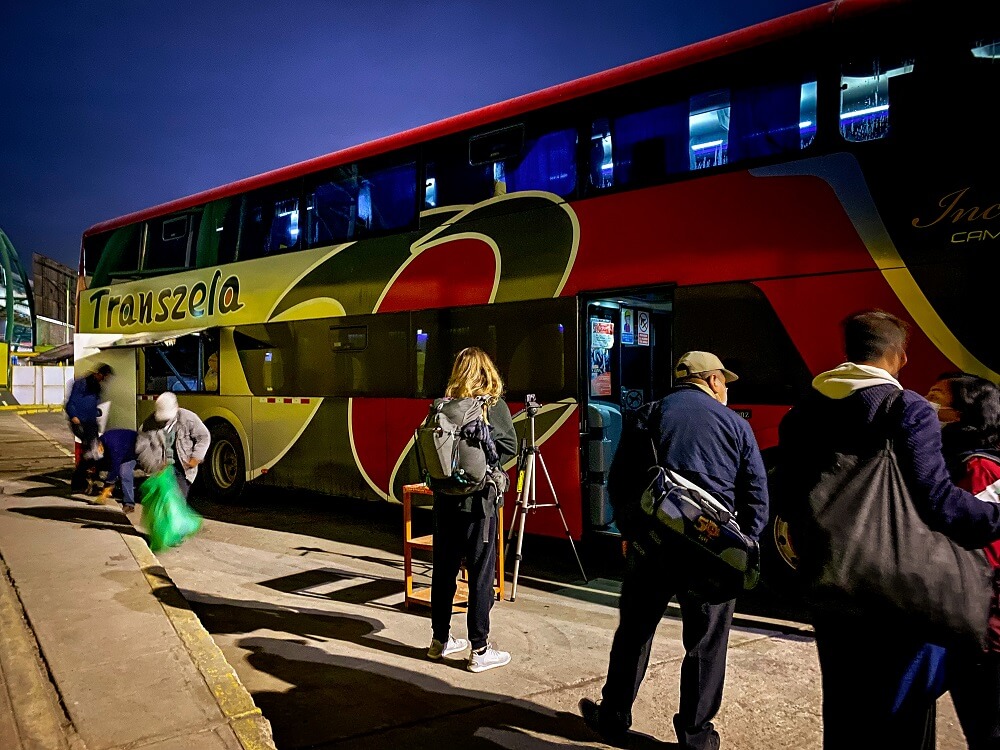
Transzela
Peru Hop’s other chosen public bus company was Transzela. We travelled on two night buses with them from Arequipa to Puno and from Puno to Cusco. Transzela operate between Arequipa, Juliaca, Puno and Cusco. Therefore, it’s a good option for anyone travelling the south of Peru.
The company also travels to Bolivia (daily departures to Copacabana or La Paz), so again it would be a great choice if you’re backpacking across South America and crossing borders by land.
Just like with Cruz del Sur, Transzela have different bus classes. We travelled on the double decker buses with comfortable, reclining seats with leg rests, A/C, screens and toilets.
Civa
With over 45 years of experience, Civa is another popular bus company in Peru. They have services across the country all the way from the Ecuadorian border to the Chilean border. So it’s a great company for those backpacking through South America and those who want to get as close to the borders as possible.
Their buses are similar to Cruz del Sur buses with double decker’s, large and reclining seats with leg rests, toilets, USB cables, A/C, and on board hosts.
Apparently their luxury buses have 180 degree reclining seats, so a good night’s sleep is definitely possible. Of course, the tickets for these buses might be more expensive, but personally we would pay a bit extra for more comfort.
Whilst we have no personal experience with this bus company, unless you’re venturing to the very north of Peru, we still recommend using Peru Hop for the south of Peru.
Ormeño
Grupo Ormeño is one of the oldest bus companies in Peru. It runs along the coastal Pan-American Highway, and serves many destinations along the way. What’s great about this company is that it runs all the way to the Ecuadorian and Chilean borders. Apparently it also stops at quite a few off-the-beaten path locations that many other bus companies don’t. Although it’s got good coverage along the coast of Peru, it’s not the best for inland destinations.
Whilst you can read a lot of negative reviews online, this is probably the only bus company that has offices in many other South American countries such as Ecuador, Colombia, Venezuela, Chile, Argentina, Bolivia and Brazil.
Movilbus
Movilbus is said to be a good choice if you’re travelling to the north of Peru or some bigger inland cities such as Huancayo, Tarapoto or Cajamarca. There are some negative comments about them, so make sure to do your own research before booking your ticket with this company.
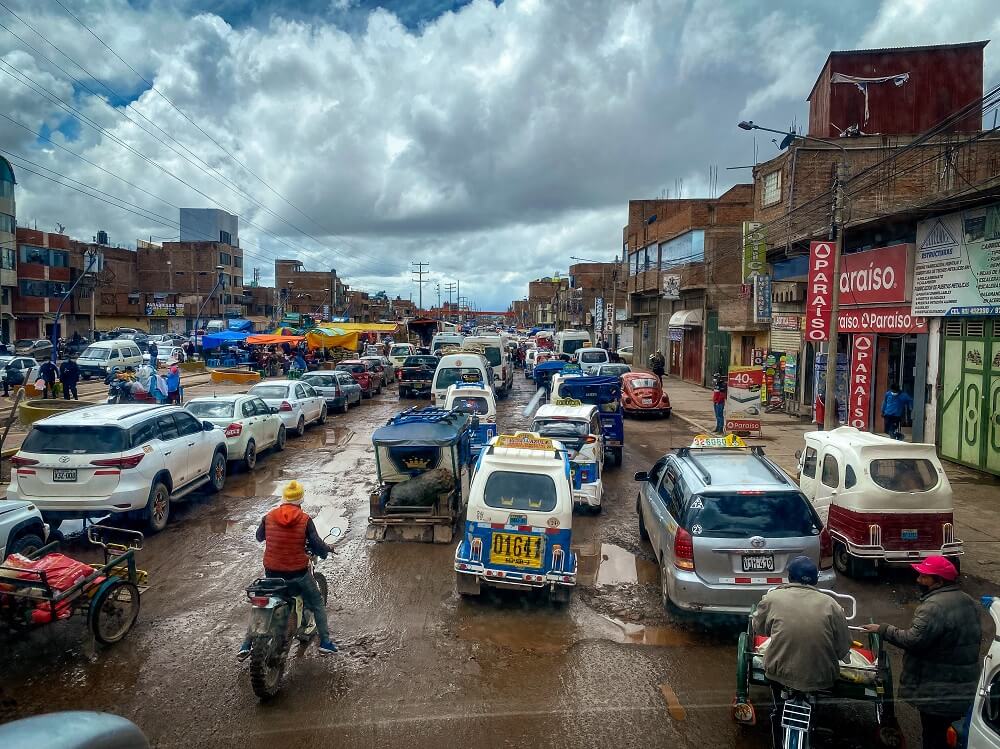
Final Thoughts on Bus Travel Around Peru
We had a great time travelling by bus across Peru. Luckily, other than a few delays, nothing else happened to us, which of course made our overall experience better.
Although the journeys were long, we felt like time passed very quickly and we even managed to have decent night’s sleeps on the overnight buses. Travelling by bus didn’t just reduce our carbon footprint but also saved us a lot of money on air fares. Day time travel also allowed us to experience the crazy changes in scenery and really appreciate the scale of the country. Bus travel definitely made us feel like we saw a lot more of Peru.
All in all, we recommend using Peru Hop when travelling around the south of Peru. For any places Peru Hop doesn’t travel to, we suggest checking out Cruz del Sur first before any other companies.
Have you ever travelled around Peru by bus before? If so, let me know about your experience in the comments section below. If not, would you want to try out any of the bus companies we’ve mentioned?
Now, let your adventure begin,

Our Top Travel Resources
Accommodation: For hotels we always use Booking.com and Hostelworld for hostels. We also book longer stays on Airbnb or Vrbo.
Flights: To find the best flight prices we always check Skyscanner, Google Flights or WayAway. Then we also check the airlines’ websites too for comparison.
Car Rentals: We use Discover Cars when we want to rent a car as it compares local, national and international companies.
Activities: If we book organised tours we always check either GetYourGuide or Viator.
Foreign Currency: Whenever we can we prefer to pay in local currency and for that we always use our Wise card. We can easily withdraw money from the ATM or pay by card at most shops and restaurants.
Travel Insurance: We never go anywhere without travel insurance. You never know what will happen on your trip, so good travel insurance like SafetyWing can protect you in case of injury, illness, theft and cancellations.
eSIM and VPN: To get data abroad we use Airalo which is an app that allows you to download a prepaid eSIM to your phone in over 190 countries. Make sure to have a VPN to avoid hackers accessing your personal data when using public WIFI. We use Surfshark which is the only VPN that offers one account on unlimited devices.
Remember…It all starts with a Pin…

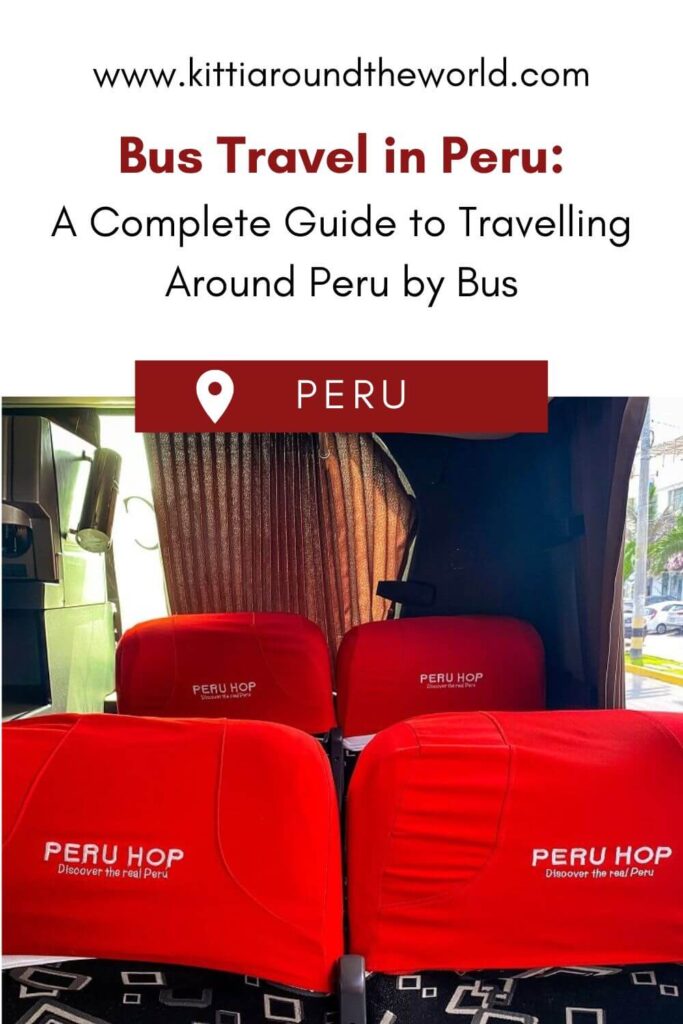

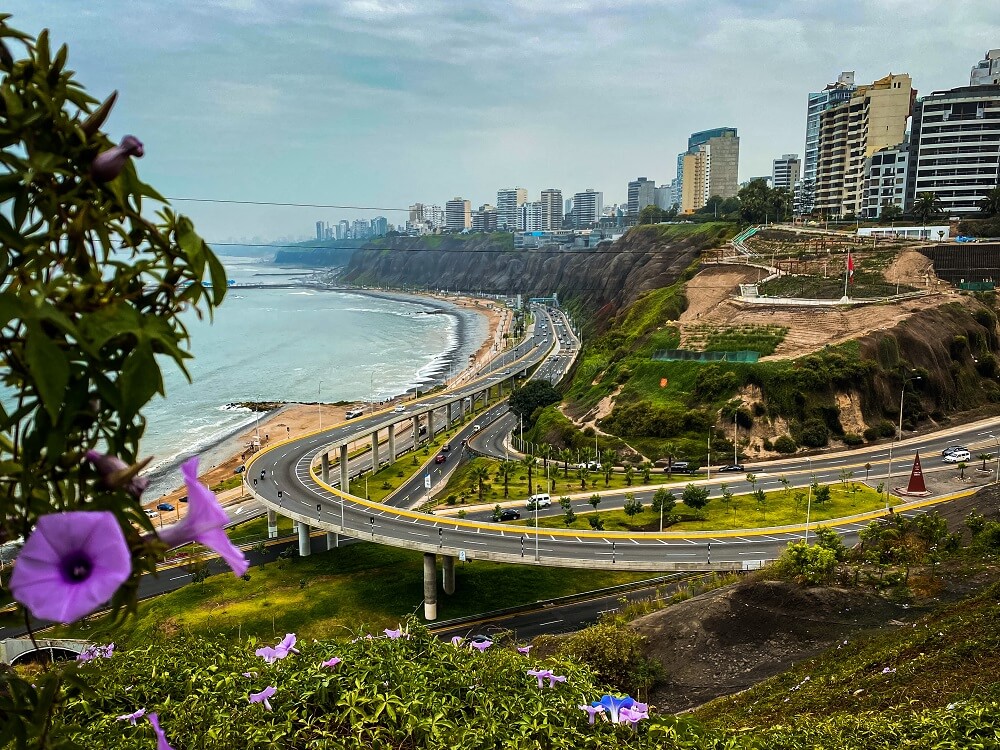

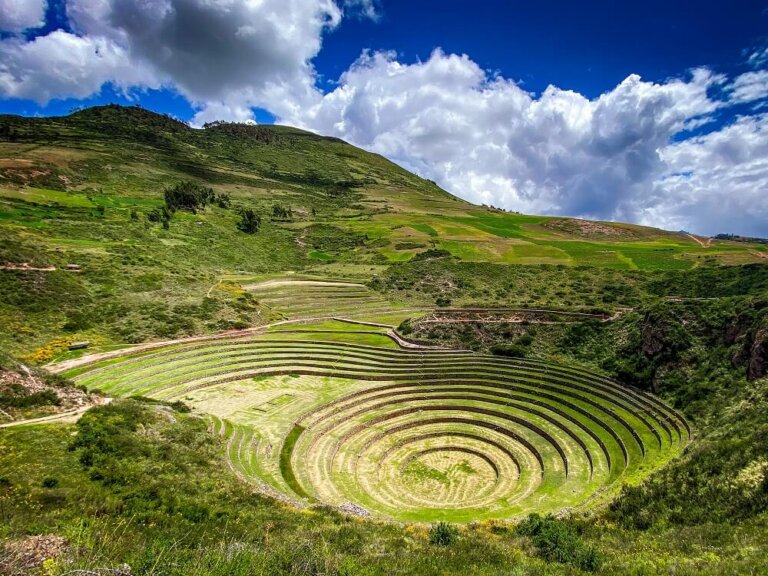

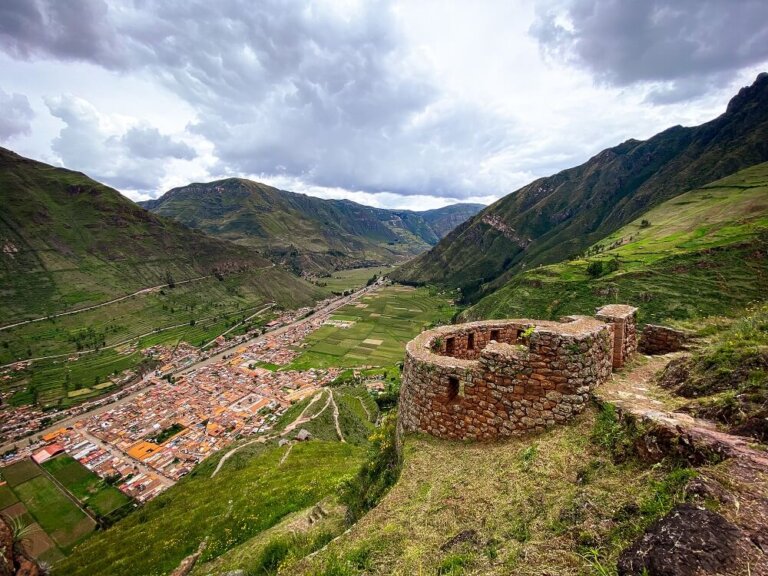
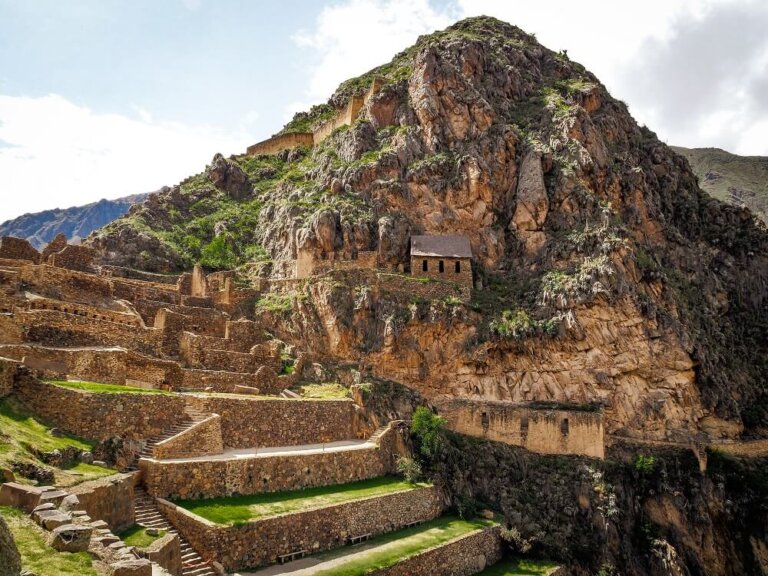
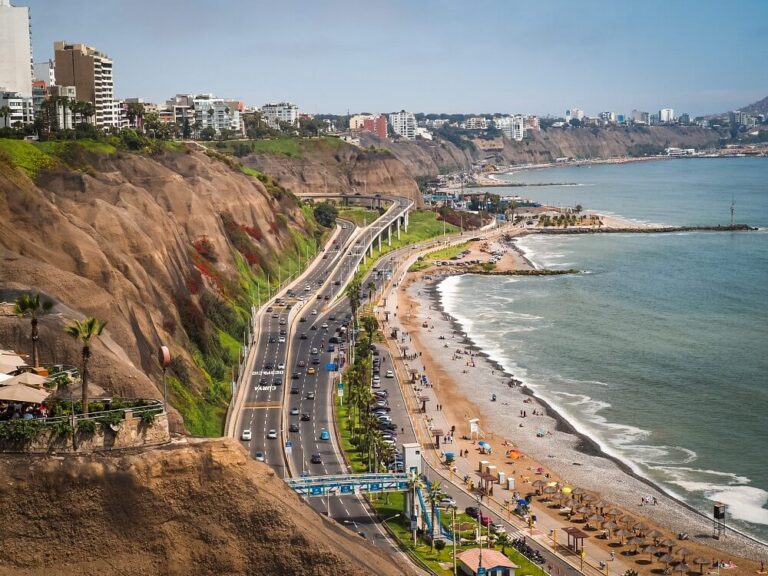
Hi, the buses don’t depart at the airport, but I’ve read that it isn’t all that save to just leave the airport due to Callao being a dangerous district. How did you go from the airport to the departure place of the bus? Thank you so much!
Hi Julie, you can book an official airport taxi at Lima airport when you arrive (we went with Green Airport). That can drop you off at Transportes Cruz del Sur bus terminal. Hope this helps and have a great time in Peru.